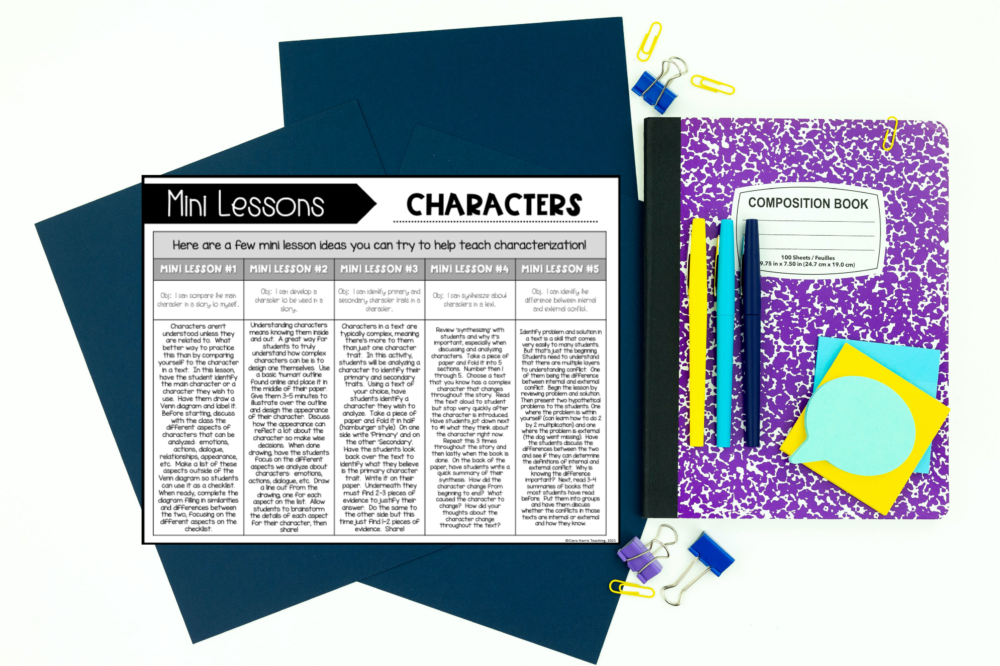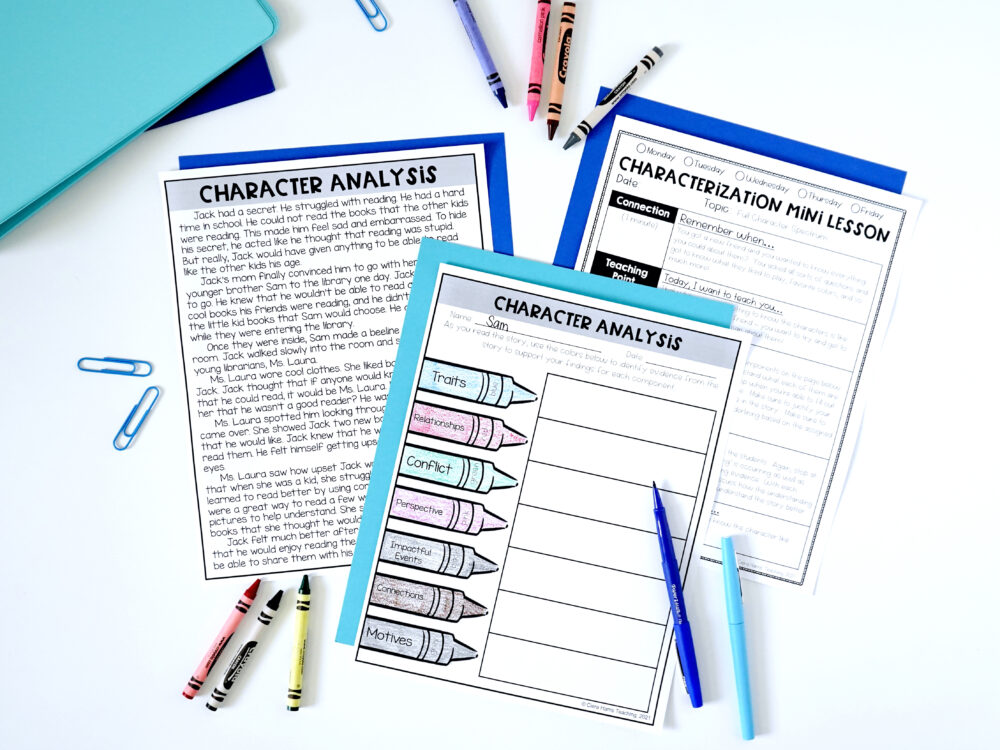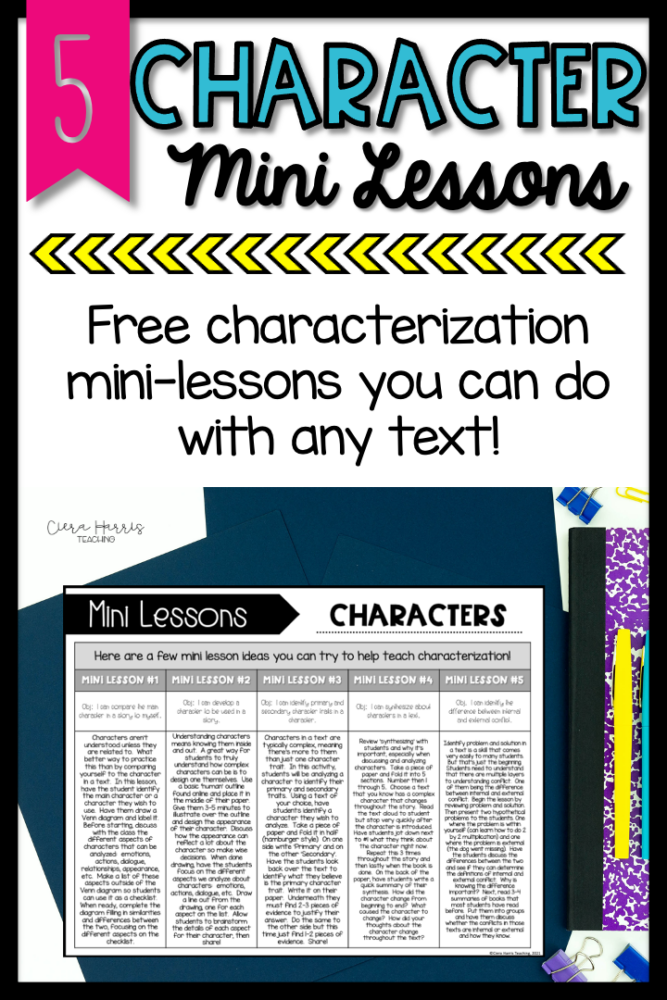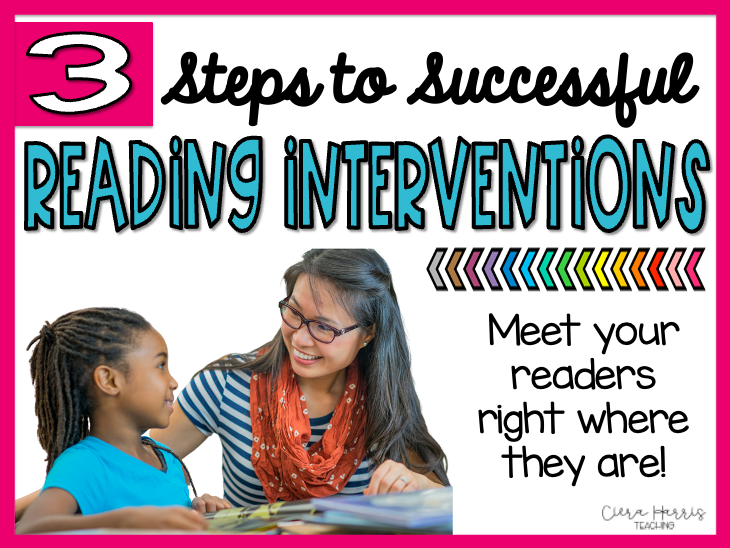Teaching characters is always one of my favorite skills to teach. There is just SO much we can do and discuss when it comes to the characters in a story. But to truly get deep and critical with evaluating and analyzing the characters in a book, we have to get creative with our lesson plans. Today, I’m sharing with you five free character mini-lesson activities you can do with any text to help students understand characterization on a deeper level!

Want to watch the video instead? Check it out below! Make sure to subscribe to get updates on all new content!
Character Mini-Lesson #1
Objective: I can compare the main character in a story to myself.
Characters aren’t understood unless they are related to. What better way to practice this than by comparing yourself to the character in a text? In this lesson, have the student identify the main character or a character they wish to use. Have them draw a Venn diagram and label it. Before starting, discuss with the class the different aspects of characters that can be analyzed: emotions, actions, dialogue, relationships, appearance, etc. Make a list of these aspects outside of the Venn diagram so students can use it as a checklist. When ready, complete the diagram filling in similarities and differences between the two, focusing on the different aspects on the checklist.
Mini-Lesson #2
Objective: I can develop a character to be used in a story.
Understanding characters means knowing them inside and out. A great way for students to truly understand how complex characters can be is to design one themselves. Use a basic ‘human’ outline found online and place it in the middle of their paper. Give them 3-5 minutes to illustrate the outline and design the appearance of their character. Discuss how the appearance can reflect a lot about the character so make wise decisions. When done drawing, have the students focus on the different aspects we analyze about characters: emotions, actions, dialogue, etc. Draw a line out from the drawing, one for each aspect on the list. Allow students to brainstorm the details of each aspect of their character, then share!
Want to grab a free printout of these character mini-lessons? Just enter your email below and they are all yours!

Character Mini-Lesson #3
Objective: I can identify the primary and secondary character traits of a character.
Characters in a text are typically complex, meaning there’s more to them than just one character trait. In this activity, students will be analyzing a character to identify their primary and secondary traits. Using a text of your choice, have students identify a character they wish to analyze. Take a piece of paper and fold it in half (hamburger style) On one side write ’Primary’ and on the other ‘Secondary’. Have the students look back over the text to identify what they believe is the primary character trait. Write it on their paper. Underneath they must find 2-3 pieces of evidence to justify their answer. Do the same to the other side but this time just find 1-2 pieces of evidence. Share!
Mini-Lesson #4
Objective: I can synthesize about characters in a text.
Review ‘synthesizing’ with students and why it’s important, especially when discussing and analyzing characters. Take a piece of paper and fold it into 5 sections. Number them 1 through 5… Choose a text that you know has a complex character that changes throughout the story. Read the text aloud to the students but stop very quickly after the character is introduced. Have students jot down next to #1 what they think about the character right now. Repeat this 3 times throughout the story and then lastly when the book is done. On the back of the paper, have students write a quick summary of their synthesis. How did the character change from beginning to end? What caused the character to change? How did your thoughts about the character change throughout the text?
Check out these characterization picture book suggestions AND tips and tricks to help teach all about characters!
Character Mini-Lesson #5
Objective: I can identify the difference between internal and external conflict.
Identifying problems and solutions in a text is a skill that comes very easily to many students. But that’s just the beginning. Students need to understand that there are multiple layers to understanding conflict. One of them is the difference between internal and external conflict. Begin the lesson by reviewing the problem and solution. Then present two hypothetical problems to the students. One where the problem is within yourself (can learn how to do 2 by 2 multiplication) and one where the problem is external (the dog went missing). Have the students discuss the differences between the two and see if they can determine the definitions of internal and external conflict. Why is knowing the difference important? Next, read 3-4 summaries of books that most students have read before. Put them into groups and have them discuss whether the conflicts in those texts are internal or external and how they know.
Needing MORE character mini lesson ideas? I’ve got you covered! Check out these 5 print and go mini-lesson activities. Each comes with the full lesson plan and all materials included to teach the lesson! Even the texts.

Grab them here!
I hope you found some new and interesting ideas for teaching characterization! Make sure to pin the image below to save this post for later!






